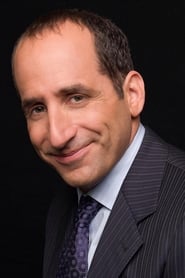
Ask Your Own Question
What is the plot?
In "Keeping It Real: Accuracy In Writing," the episode opens with a behind-the-scenes look at the writing process for the show "House." The writers gather in a conference room, discussing the importance of accuracy in medical storytelling. They express their desire to create compelling narratives while ensuring that the medical details are precise. The atmosphere is filled with a mix of excitement and pressure as they brainstorm ideas for upcoming episodes.
As the writers delve into their discussions, they highlight various real-life medical cases that have inspired them. One writer shares a particularly harrowing story about a patient with a rare disease, which sparks a debate about how to balance dramatic storytelling with factual accuracy. The writers engage in a lively conversation, weighing the pros and cons of taking creative liberties versus sticking to the truth. This scene establishes the central theme of the episode: the struggle between artistic expression and factual representation.
The narrative shifts to a roundtable discussion featuring the show's medical consultants. They emphasize the importance of research and the ethical responsibility of portraying medical conditions accurately. The consultants share anecdotes from their experiences in the field, illustrating the complexities of diagnosing and treating patients. Their insights provide a deeper understanding of the medical world, and the writers take notes, eager to incorporate this knowledge into their scripts.
Next, the episode transitions to a mock writing session where the writers attempt to draft a scene based on the medical case discussed earlier. They role-play as characters, with one writer acting as the patient and another as Dr. House. The scene is filled with tension as they explore the emotional impact of the diagnosis on the patient. The writers struggle to find the right balance between drama and realism, leading to a heated debate about the portrayal of patient emotions in the script.
As the mock session continues, the writers face challenges in accurately depicting the medical jargon and procedures. They consult with the medical consultants for clarification, leading to a series of humorous misunderstandings. The scene highlights the collaborative effort required to create a believable narrative, showcasing the dynamic between the writers and the medical experts.
The episode then shifts focus to a specific case that the writers decide to incorporate into an upcoming episode. They outline the patient's symptoms and potential diagnoses, brainstorming how to build suspense and intrigue around the case. The writers express their desire to create a twist that will surprise the audience, leading to discussions about the ethical implications of such storytelling choices.
In a pivotal moment, one writer suggests a controversial plot twist that involves a misdiagnosis leading to severe consequences for the patient. This suggestion ignites a passionate debate among the writers, with some arguing that it could undermine the show's credibility. The tension escalates as they grapple with the implications of their creative choices, ultimately deciding to take a risk in the name of storytelling.
The episode concludes with the writers reflecting on their process and the responsibility they hold as storytellers. They acknowledge the challenges of balancing accuracy with drama, but express a commitment to delivering compelling narratives that resonate with viewers. The final scene shows them returning to their scripts, energized and ready to tackle the next challenge, embodying the spirit of creativity and collaboration that defines the show.
What is the ending?
In the ending of "Keeping It Real: Accuracy In Writing," the episode concludes with the characters reflecting on their experiences and the importance of authenticity in storytelling. House, having navigated the complexities of writing and the challenges of portraying real-life medical scenarios, ultimately emphasizes the need for truth in narratives, both in medicine and in life.
As the episode unfolds towards its conclusion, we see House in a dimly lit room, surrounded by his team. The atmosphere is tense yet contemplative. House, with his signature sardonic wit, begins to dissect the various narratives they have encountered throughout the episode. He challenges his team to think critically about the stories they tell, urging them to consider the implications of their words and the realities they represent.
The camera shifts to each character, capturing their expressions of realization and introspection. Foreman, with a furrowed brow, contemplates the ethical dilemmas they face in their practice. Cameron, her eyes glistening with emotion, reflects on the personal stories that intertwine with their medical cases. Chase, leaning back in his chair, appears more relaxed but is clearly engaged in the discussion, nodding in agreement with House's points.
As the conversation deepens, House shares a personal anecdote, revealing a vulnerability that is rarely seen. He speaks about a patient who taught him the value of honesty, both in medicine and in life. This moment resonates with the team, prompting them to share their own experiences and the lessons they've learned. The dialogue flows naturally, filled with laughter and moments of silence as they each grapple with their own truths.
The episode culminates in a poignant scene where House stands by a window, looking out at the cityscape. The sun sets in the background, casting a warm glow that contrasts with the cool tones of the room. He turns to his team, a rare moment of sincerity in his voice, and emphasizes that while stories can be embellished, the core of every narrative must remain grounded in reality. This moment serves as a reminder of the responsibility they hold as medical professionals and storytellers.
As the credits roll, we see brief glimpses of each character moving forward in their lives, carrying the lessons learned from their discussions. House, still enigmatic, walks away from the window, leaving the audience with a sense of hope and the understanding that authenticity is key in both medicine and storytelling.
In summary, the episode ends with a strong message about the importance of truth in narratives, showcasing the growth of each character as they reflect on their experiences and the stories they tell.
Is there a post-credit scene?
In the episode "Keeping It Real: Accuracy In Writing" from the "House" specials, there is indeed a post-credit scene. This brief moment serves as a humorous and reflective capstone to the episode's themes of authenticity and the challenges of storytelling in medicine.
As the credits roll, the scene opens in the familiar setting of the Princeton-Plainsboro Teaching Hospital. Dr. Gregory House is seen sitting in his office, a slight smirk on his face as he reviews a stack of medical files. The camera zooms in on his expression, revealing a mix of amusement and contemplation.
Suddenly, Dr. James Wilson enters the room, holding a coffee cup and looking slightly bemused. He asks House if he's still pondering the accuracy of the medical cases they've encountered. House, with his characteristic sarcasm, replies that he's more concerned about the accuracy of Wilson's coffee-making skills, implying that Wilson's coffee is subpar.
The scene shifts as House stands up, moving towards the window, looking out at the hospital grounds. He reflects on the complexities of human nature and the stories behind each patient they treat. His tone becomes more serious, hinting at the weight of the decisions they make daily. Wilson, sensing the shift in mood, quietly sips his coffee, allowing House a moment of introspection.
The scene concludes with House turning back to Wilson, a glimmer of mischief in his eyes as he suggests they should write a book together, humorously proposing titles that play on their experiences. Wilson rolls his eyes, but a smile breaks through, indicating their enduring friendship and the balance of their personalities.
This post-credit scene encapsulates the essence of the series, blending humor with deeper reflections on the nature of their work and the stories that define their lives.
What specific challenges do the writers face in accurately portraying medical conditions in the episode?
In 'Keeping It Real: Accuracy In Writing', the writers delve into the complexities of accurately depicting medical conditions, highlighting the balance between dramatic storytelling and factual representation. They discuss the importance of consulting medical professionals to ensure that the symptoms and treatments shown are realistic, which adds a layer of authenticity to the narrative.
How does Dr. House's character development reflect the challenges of writing for a medical drama?
Throughout the episode, Dr. House's character is examined in terms of how his cynical and often abrasive personality can be both a strength and a weakness in the context of medical storytelling. The writers explore how his interactions with patients and staff reveal deeper emotional layers, showcasing the struggle to maintain his character's integrity while also pushing the narrative forward.
What role do the supporting characters play in enhancing the accuracy of the medical scenarios presented?
The supporting characters, including Dr. Wilson and the team of diagnosticians, are integral in providing diverse perspectives on the medical cases. Their interactions and differing opinions create a dynamic that not only drives the plot but also emphasizes the collaborative nature of medical diagnosis, showcasing how teamwork is essential in real-life medical settings.
How do the writers incorporate real-life medical cases into the storyline of the episode?
The episode features discussions on how real-life medical cases inspire the show's storylines. The writers share anecdotes about actual patients and conditions that have influenced their scripts, illustrating the process of transforming true stories into compelling television while maintaining respect for the individuals involved.
What specific writing techniques do the creators use to maintain viewer engagement while discussing medical accuracy?
The creators employ various writing techniques, such as cliffhangers, character-driven subplots, and humor, to keep viewers engaged. They discuss how these elements are woven into the narrative to balance the technical aspects of medicine with the emotional journeys of the characters, ensuring that the audience remains invested in both the medical and personal stakes.
Is this family friendly?
"Keeping It Real: Accuracy In Writing" from the "House" specials is not particularly family-friendly. The episode contains several elements that may be objectionable or upsetting for children and sensitive viewers.
-
Medical Procedures: There are graphic depictions of medical conditions and procedures that may be unsettling, including discussions of illness and surgery.
-
Dark Humor: The show often employs dark humor, which may not be suitable for younger audiences or those who are sensitive to such themes.
-
Emotional Turmoil: Characters experience significant emotional distress, including themes of betrayal, loss, and moral dilemmas, which could be heavy for younger viewers.
-
Language: There may be instances of strong language or adult themes that could be inappropriate for children.
-
Complex Relationships: The episode explores complicated adult relationships and ethical issues that may be difficult for younger viewers to understand.
Overall, the content may be more suitable for mature audiences due to its serious themes and emotional depth.

















